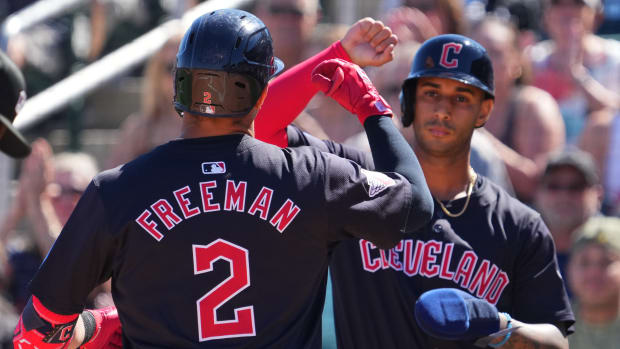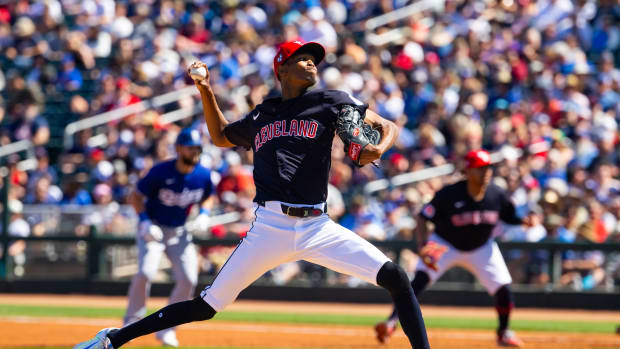Indians Starter Carlos Carrasco is Having Trouble with His Favorite Pitch
Back in 2018, Cleveland Indians starter Carlos Carrasco began shifting the usage percentage of his pitches. Most notably, he began ramping up the amount of sliders he dished to opposing hitters.
This specific breaking ball has been Carrasco’s most utilized pitch in each of the past two seasons, and carries that designation this year, as well. It’s easy to see why, as his slider boasted a whiff rate of 44.8% last season, 48.5% the year before that.
With that in mind, there was no reason for him to adjust his approach heading into 2020, which was hammered home further in Carrasco’s first three starts.
However, his last two appearances have been shaky. Said struggles, at first glance, appear to be a result of command issues with his favorite pitch.
This didn’t appear to be a problem early on. Through his first three games, it certainly seemed like Carrasco had returned to the consistently reliable starter Cleveland has come to know.
After three starts, Carrasco boasted a 2-1 record and an ERA of 2.50. His walk rate was a little high (8.5%), but he struck out 32.4% of the hitters he faced. With a WHIP of just 1.00, another strong campaign appeared to be on the horizon.
Said context certainly makes what we’ve seen from Carrasco over the last week a little jarring.
In his last two starts, taking on the Cubs and Pirates, Carrasco went 0-1 with a 6.23 ERA. While his strikeout rate was strong (27.9%), his walk rate jumped to 18.6%. Carrasco’s WHIP across his last two appearances was almost twice as much as what he generated in the previous three (1.96).
Neither start lasted longer than 4.1 innings, yet he threw at least 91 pitches in both. In fact, he topped 100 pitches before notching the first out of the fifth inning against Chicago.
The sample size is small, but the numbers are still concerning enough to make you dig deeper to see what happened. When doing so, you’ll notice Carrasco’s last two opponents seemed to get a better read on his slider.
Through his first three starts, Carrasco threw a total of 99 sliders. Of those pitches, he received called strikes on 20 and generated 15 whiffs. That’s good for a called strike plus whiff rate of 35.5%. Overall, 15 of Carrasco’s 23 strikeouts during this time frame came off a slider.
The results he’s seen with this pitch over the past two starts have been quite the opposite.
Against Chicago and Pittsburgh, Carrasco threw a total of 50 sliders. Off those sliders, he was able to land a swinging strike on just five for a whiff rate of 10%. Furthermore, only five of Carrasco’s sliders resulted in a called strike.
After going three starts notching a called or swinging strike with over a third of his sliders, he was only able to land this result with 20% of them in his last two showings.
In fairness, neither the Cubs nor Pirates hit Carrasco’s slider particularly hard. Each opponent only put four balls in play off that pitch, the former with an average exit velocity of 76.7, the latter 74.1. Likewise, Pittsburgh fouled off nine sliders Tuesday night.
Still, during his last two starts, Carrasco’s go-to pitch simply wasn’t as effective as it has been. Opponents weren’t making hard contact, but they also weren’t chasing after it, either. Additionally, Carrasco just wasn’t able to locate it as well as he typically does.
Two starts don’t make an entire season, so there’s no reason to believe Carrasco’s slider will give him trouble for the rest of the summer. 60% of his appearances this year qualify as quality starts, so for all we know, the last two showings could be nothing but bumps in the road.
That said, these outings left a lot to be desired. In order to get back on track, Carrasco will need to regain command of his priority pitch.




